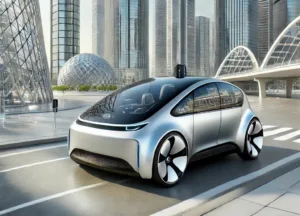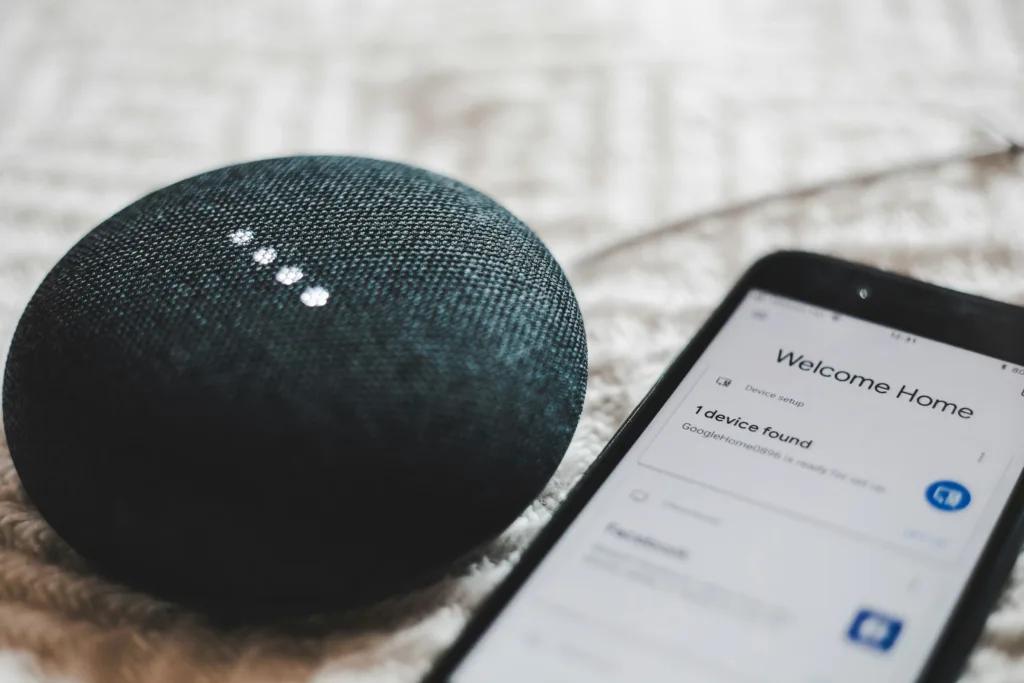Artificial Intelligence (AI) has a great impact on many industries and influences different spheres of our life. It drives innovation, efficiency, and new capabilities to healthcare, finance, manufacturing, communication, etc. That’s why you need to stay on track of latest trends and updates when it comes to AI. As it evolves each day It can be pretty overwhelming to follow all the latest news. We are here to help you navigate through the rapidly changing information.

Current Trends in Artificial Intelligence
- AI in Healthcare
Let’s explore how artificial intelligence changes healthcare. Basically, it improves diagnostic accuracy, makes treatment plans more personalized, and enhances patient care. What is more, AI-tools enables early detection of such diseases as cancer. Machine learning algorithms can analyze vast amounts of medical data to predict disease outbreaks, identify potential health risks, and recommend preventive measures. Isn’t it great! According to a report by McKinsey & Company, AI has the potential to create $150 billion in annual savings for the U.S. healthcare economy by 2026.
A second interesting use of AI in healthcare concerns of predictive modeling. For instance, it is possible to use algorithms to estimate the likelihood of patients being readmitted to hospitals and address the issue. In the application of personalized medicine, AI makes it possible for treatments to be designed according to one’s genes, activities, and surrounding conditions which would increase the effectiveness of treatments and minimize side effects.
- Natural Language Processing (NLP)
where computers can in some form or the other interact with human language. NLP applications include but are not limited to; chatbots and virtual assistants, sentiment analysis and language translation. The increasing development of conversational AI technology, as reflected in OpenAI’s GPT-4 model, helps the customer service to advance, tasks with a repetitive character to become solved autonomously, and user experiences to become improved. A Gartner report predicts that by 2025, 50% of organizations will use NLP to enhance customer interactions.
Another of the numerous uses of NLP is sentiment analysis, which is widely utilized in assessment of social media activity and customer opinions. Companies like IBM Watson have developed advanced sentiment analysis tools that can accurately gauge public opinion and customer satisfaction, helping businesses to tailor their strategies accordingly.
- Autonomous Vehicles
AI is driving the development of autonomous vehicles, promising to reshape transportation. Self-driving cars use a combination of AI, machine learning, and sensors to navigate roads, recognize obstacles, and make real-time decisions. Companies like Tesla, Waymo, and Uber are leading the charge, with significant investments in autonomous technology. According to Allied Market Research, the global autonomous vehicle market is projected to reach $556.67 billion by 2026, growing at a CAGR of 39.47% from 2019 to 2026.
Autonomous vehicles are in development being facilitated by AI and are expected to revolutionize transport systems. Self-driving cars employ AI, machine learning, and sensors to locate themselves, identify objects, and determine decisions sufficiently quickly. Large corporations such as Tesla, Waymo, and Uber have been pioneers in this aspect mainly due to their active investments in autonomous technologies. Allied Market Research also predicts that the market for autonomous vehicles will be worth $556 by. With the CAGR of 39% the market is expected to reach $ 67 billion during 2021-2026. 47% from 2019.
AI is not bound to the use of self-driving cars although the technology is currently widely applied in passenger cars. It even covers the areas of transportation, both physical and public, enhancing their productivity and security. For example, AI self-driving trucks are being trialed with specific routes like long-haul ones, whereas self-driving buses are in pilot projects in several cities around the globe and exist more often than they are needed since their reliability is generally higher than human drivers’.
- AI in Finance
AI is used in the financial industry to boost capabilities in fraud detection, risk assessment, and customer experience. Chronic transactions are scanned by AI techniques to detect suspicious transactions and robo-advisors offer automated advice pertaining to an individual’s portfolio and market trends. It is forecasted that AI integration into finance will advance with PwC claiming that AI will create $1. The global opportunities are said to be worth at least two trillion U.S dollars to the financial sector by 2030.
Algorithmic trading is one of the most notable uses of AI in finance where AI systems use data to decide trading at a high turnover. AI is also essential in issues to do with credit scores and loans where it has proved to be more competent in rating credit worthiness and reducing the bias that is often found in human beings.
- AI and Robotics
Thus, the distinctive integration of AI and robotics is evolving the processes of manufacturing, logistics, and service industries. Humans can integrate AI-powered robots in industries as they are capable of accomplishing comprehensive tasks and altering their functions relative to the environment. Cobots are special types of industrial robots that are used in factories primarily to increase efficiency and decrease risks. According to a report by The International Federation of Robotics (IFR), the global robotics market is expected to grow at a CAGR of 26% from 2021 to 2025, driven by advancements in AI and machine learning.
In assembly lines, there are applications of AI through robots that are used in assembly, welding and inspection of quality which reduces errors. In logistics, AI improves how goods are transported and how much of each product is to be restocked. The AI-powered service robots are employed in the sphere of medical care within patient services, and in the sphere of retail services within customer services.
Future Predictions for Artificial Intelligence
- Ethical and Responsible AI
Due to the B2B focus, ethical and responsible use of AI in marketing should be enforced as the technology becomes increasingly embedded in business processes. Thus, it can be concluded that future AI systems will be primarily focused on the principles of fairness and non-discrimination, ensured by employing the principles of transparency and accountability. Governments and organizations are expected to set effective and broad sets of rules and policies regulating ethics of AI usage. Industry standards of AI are critical because they are prerequisites to access the global commons.
Initiatives such as the AI Ethics Guidelines developed by the European Union outline principles for trustworthy AI, focusing on human agency, privacy, and accountability. These guidelines aim to ensure that AI systems are designed and implemented in a manner that respects human rights and promotes social well-being.
- AI and Workforce Transformation
There is no doubt that both now and in the future the workforce will experience this AI as it replaces routine work, and at the same time generates new jobs. On the one hand, certain occupations may gradually disappear, but on the other hand, AI will stimulate new professions related to AI, data analysis, and the digital economy. A report by the World Economic Forum predicts that AI and automation will displace 85 million jobs by 2025 but create 97 million new roles in fields such as AI, data science, and cybersecurity.
Regarding the issues of the transformation of the workforce, it is critical to use solutions like reskilling and upskilling. The corporate world and governments have placed their efforts in training human resources to enable them to assimilate in the new world economy characterized by advancements in AI. Specifically, AI and data science are some of the many courses that can be found on Coursera, which assists people and companies in avoiding being obsolete.
- AI in Smart Cities
The concept of smart cities, powered by AI, will gain momentum in the coming years. AI will optimize urban infrastructure, improve traffic management, enhance public safety, and provide efficient energy solutions. Smart city initiatives will rely on AI to analyze data from various sources, enabling real-time decision-making and resource allocation.
The application of smart cities with the help of AI will act as a locomotive in the years to come. They will progress the urban infrastructures, advance traffic systems, raise security measures, and develop satisfactory energy systems. AI will be used in technologies to offer processing of big data that is sourced from different sources in smart city initiatives to provide real-time decision-making and resource management. According to a report by MarketsandMarkets, the global smart cities market is projected to reach $873.7 billion by 2026, driven by advancements in AI and IoT technologies.
AI using systems available in smart cities may help in controlling traffic and cut down statistics of traffic jams which are the cause of polluted air. With the help of AI in surveillance systems as well as in systems developed for response to emergencies, public safety is improved. Smart grid application is implemented by energy management systems with the help of artificial intelligence to enhance power demand and incorporate renewable energy sources in line with VCD center’s sustainability concept.
- AI in Education
AI will be a major driver in the revolution of education systems with just tailored educational experiences and education outcomes. Courses, education corpus, and educational services will become personalized due to the usage of ITS, AL, and AI analytics. UNESCO has published a report that claims that the Artificial Intelligence system can contribute a lot in the provision of education especially to those that have been left behind in the different parts of the world for lifelong learning.
With the help of AI technologies, materials can be personalized to fit specific learning styles and rates while defining the necessities of every learner. Some of the analytical possibilities of using AI will allow early recognition of students in need of extra help. Also, AI can help educators since most of the chores are routine, and freeing up that time is valuable for the educators to provide direction to students.
- AI in Climate Change and Sustainability
AI will play an important role in fighting climate change and improving sustainability. Environmental results can be processed by using AI algorithms; future climate conditions can also be forecasted along with the efficient utilization of resources. AI-based solutions will assist in tracking the disappearance of the forests, collecting the renewable energy, and decreasing the quantity of carbon dioxide. According to a report by PwC, AI applications in climate action could contribute up to $5.2 trillion to the global economy by 2030.
Climate change is managed through the use of artificial intelligence to simulate and even estimate its outcomes in regard to policies and countermeasures. In the agriculture land, AI applied in the irrigation systems and crop conditioners, that has minimized the use of water and maximized the production. In energy, AI coordinates and controls the use of renewable sources of energy hence providing a stable electricity supply.
Conclusion
The matter of Artificial Intelligence is quickly evolving, which means it has vital influences on numerous sectors and the global community. Today’s popular healthcare, NLP, autonomous vehicles, finance, and robotics sectors are examples of AI capabilities. Thus, the future of AI is to be built by embracing such directions as ethical AI, changing workforce, smart cities, education, and climate. For it is only when one is aware of these developments that they can adequately address AI’s impacts – both the positives and negatives.







